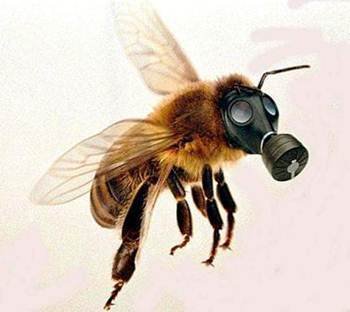
Plant insecticide changes in effect July 2016
Organophosphates and carbamates (OPCs) play an important role in New Zealand’s biosecurity and agriculture industry, but they can harm the environment, and may cause short- and long-term health problems.
The EPA has put controls in place to manage the risks from these substances, with more changes coming in to effect on 1 July 2016.
Approvals ending for some OPCs
The EPA reassessed a group of OPC insecticides used for plant protection purposes in a two-year process that ended in June 2013. This reassessment resulted in some substances having their approvals revoked immediately, while others were given time-limited approvals.
From 1 July 2016 plant protection insecticides containing fenitrothion or phorate will no longer be able to be imported or manufactured in New Zealand. Time-limited approvals were also put on plant protection insecticides that contain fenamiphos, methamidophos, prothiofos and terbufos (until 30 June 2023) and diazinon (until 30 June 2028).
New controls for OPC insecticides
Non-contact periods, or how long must be allowed between spraying and when the plant begins to flower, have been set to protect bees and other insect pollinators from being exposed to harmful insecticides after they have been applied to plants. In 2015 approvals were modified for 15 substances containing acephate, dimethoate, methamidophos, methomyl and oxamyl. The EPA has set non-contact periods for four of these substances.
Changes to product labels that will need to be made as a result of this reassessment will take full effect on 1 July 2016.The following non-contact periods will apply from 1 July 2016 (with crop exceptions in brackets):
- seven days for products containing acephate (except in lemons)
- seven days for products containing dimethoate (no exceptions)
- eight days for products containing methomyl (except in strawberries and greenhouse tomatoes)
- 10 days for oxamyl.
There is no specified non-contact period for substances with the active ingredient methamidophos, but application of insecticides containing any of these active ingredients is not permitted when bees are foraging. Application to any plant or tree that is likely to be visited by bees if the plant or tree is in open flower or part bloom is also not allowed.
Strict rules around OPC storage, use and disposal
Since 1 July 2015, only approved handlers have been able to buy these insecticides and must follow strict rules around their storage, use and disposal. These include wearing personal protective equipment, keeping them away from water, flowering plants (including weeds) and anywhere bees may be foraging. Since 1 July 2015 the control measures that have been in effect for OPC’s include:
- setting application parameters such as maximum application rates and frequencies
- restricting the method of application such as prohibiting aerial application of some substances and restricting indoor application to automated methods
- spray drift management
- a label statement to indicate that the substance is an OP or carbamate
- label warnings of risks to bees
- re-entry intervals
- requiring users of OPCs to hold approved handler certification.



 Classifieds
Classifieds

